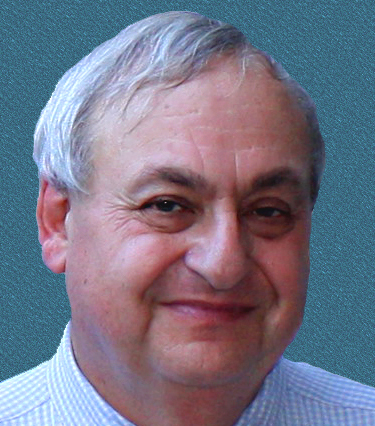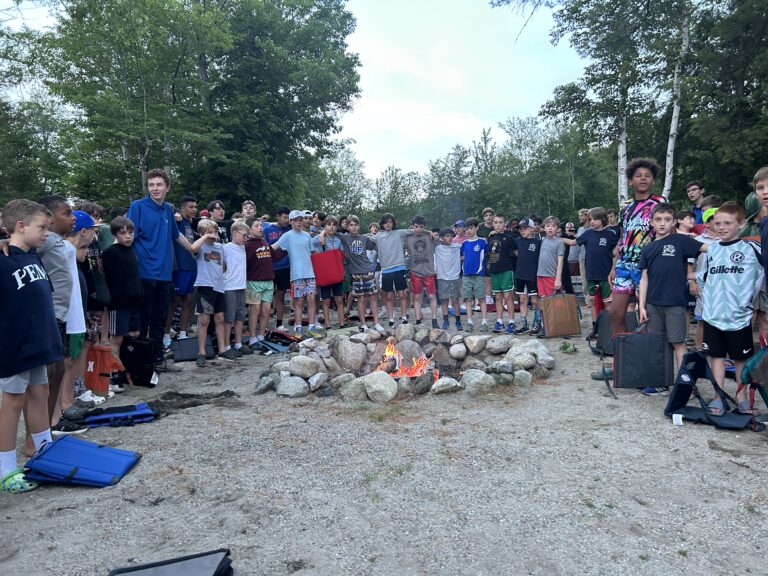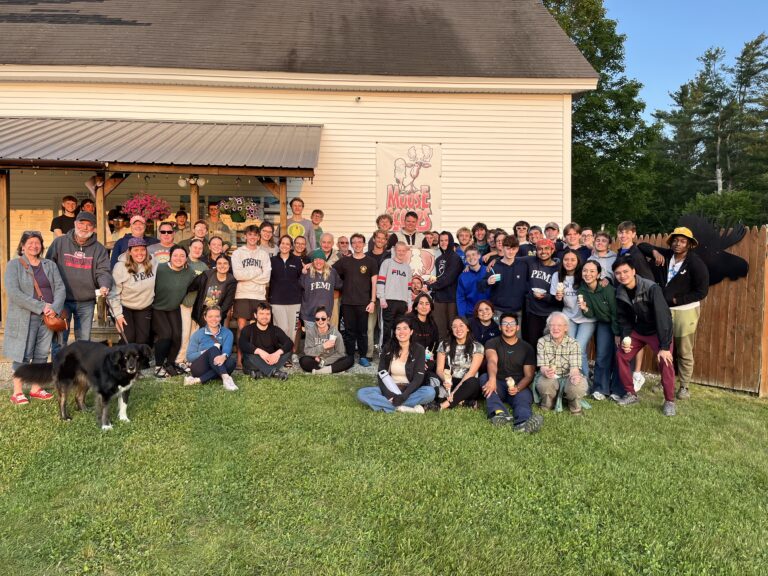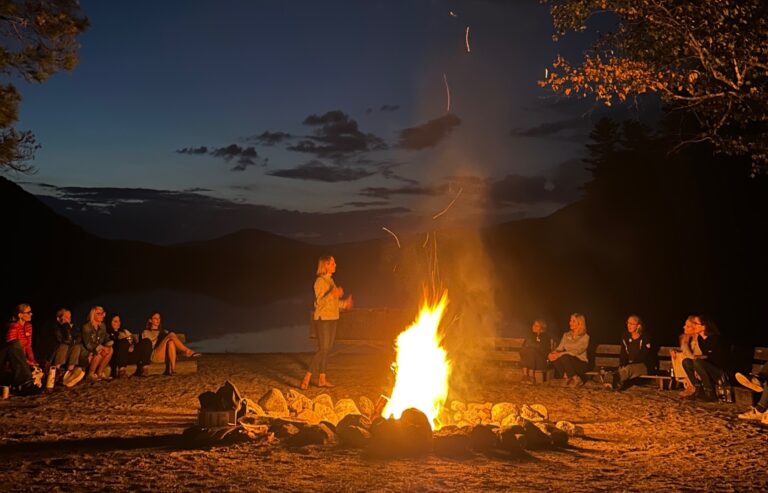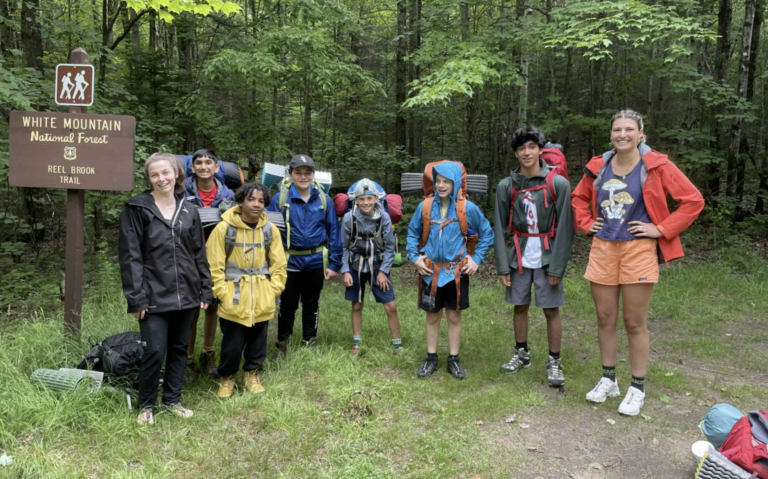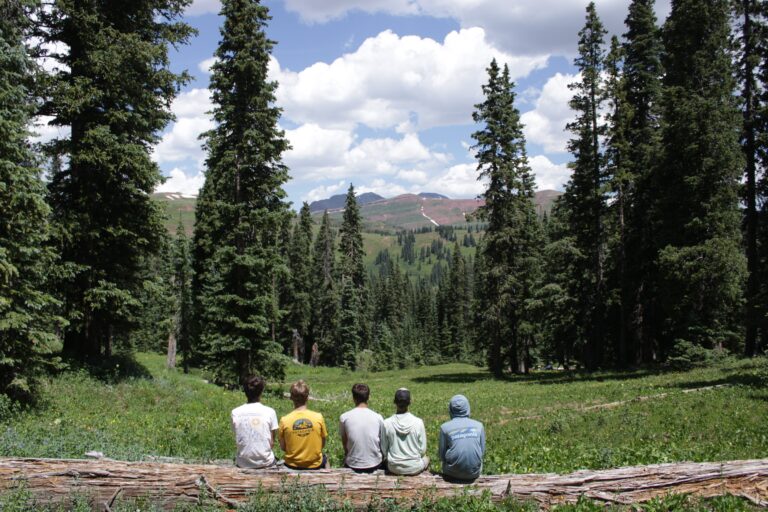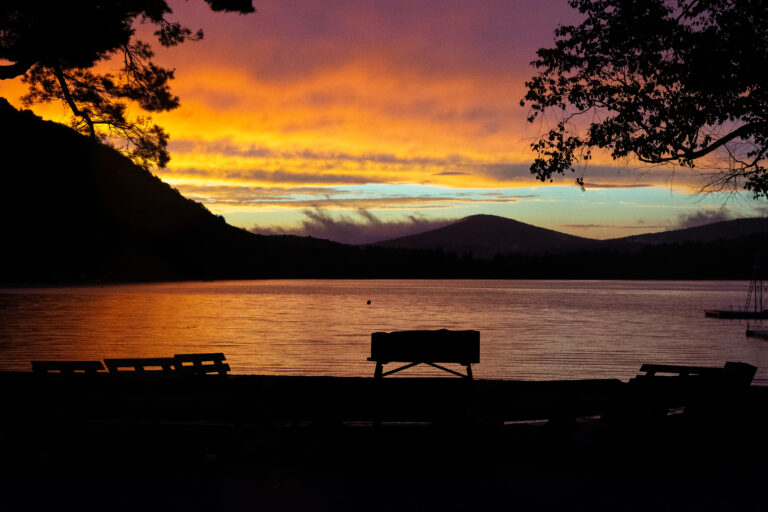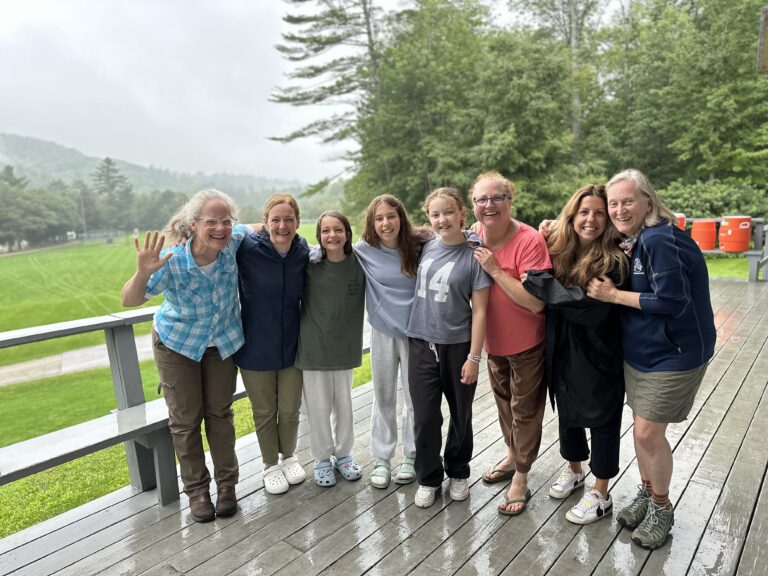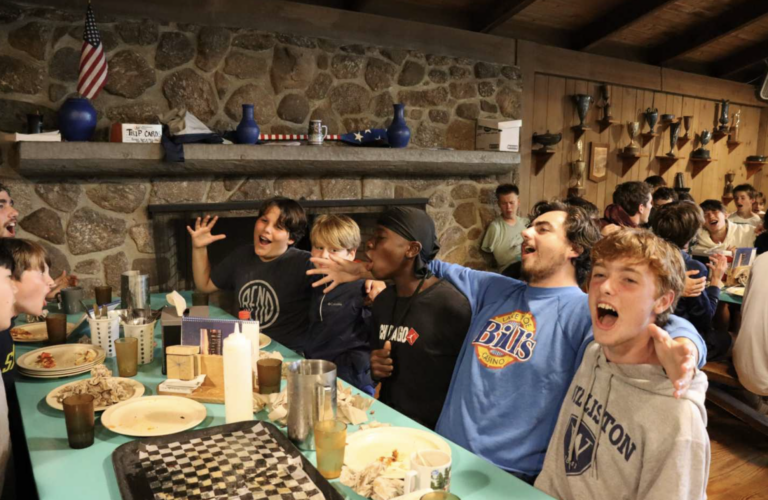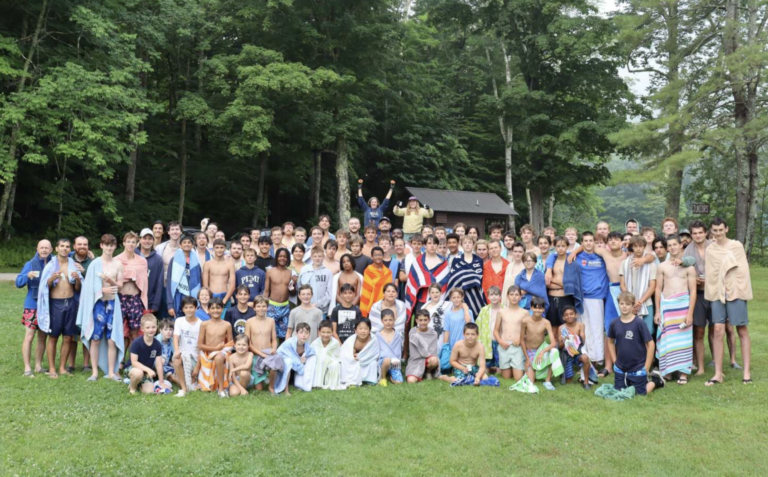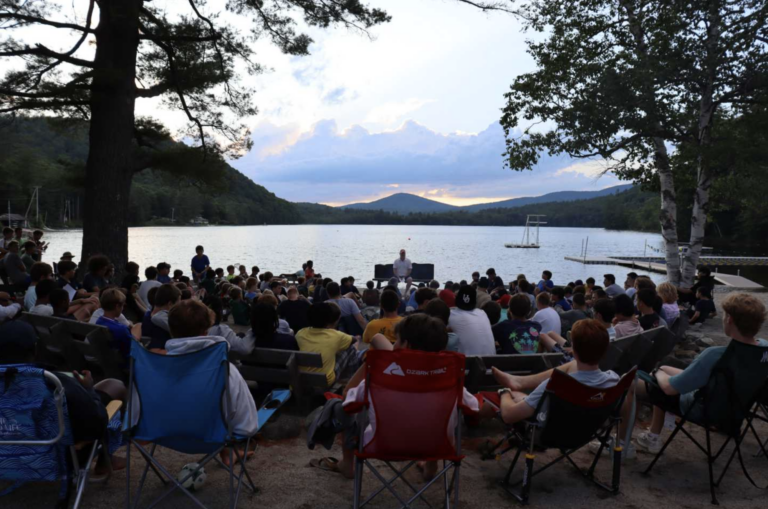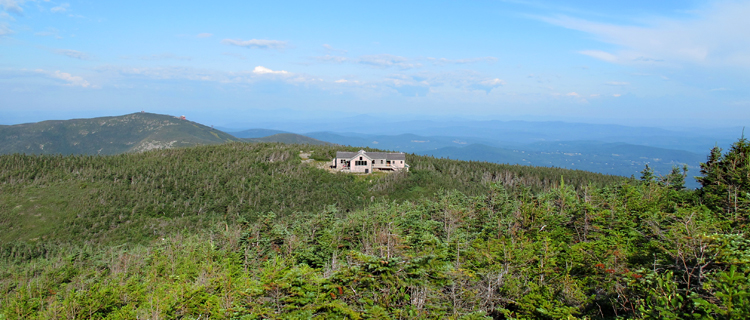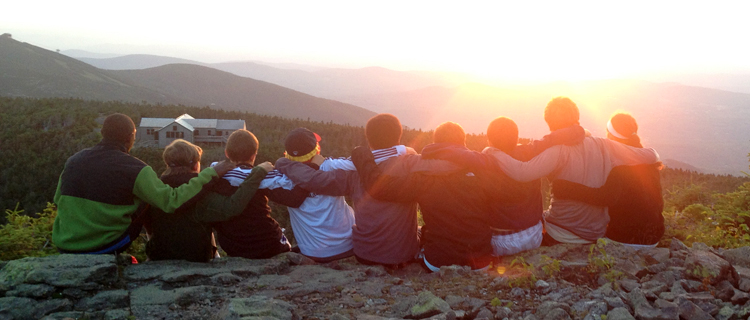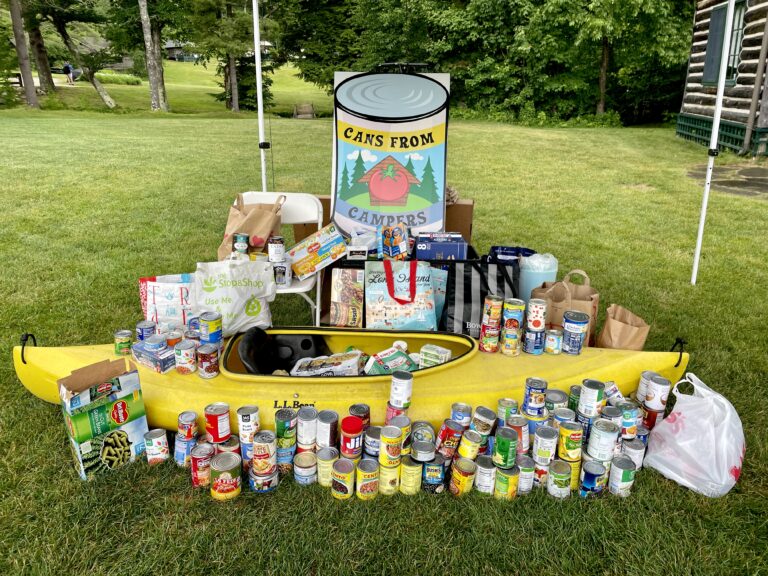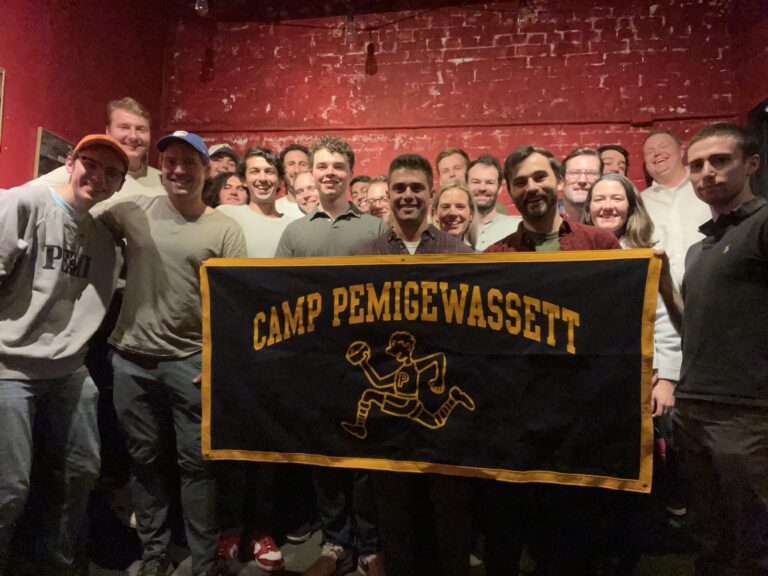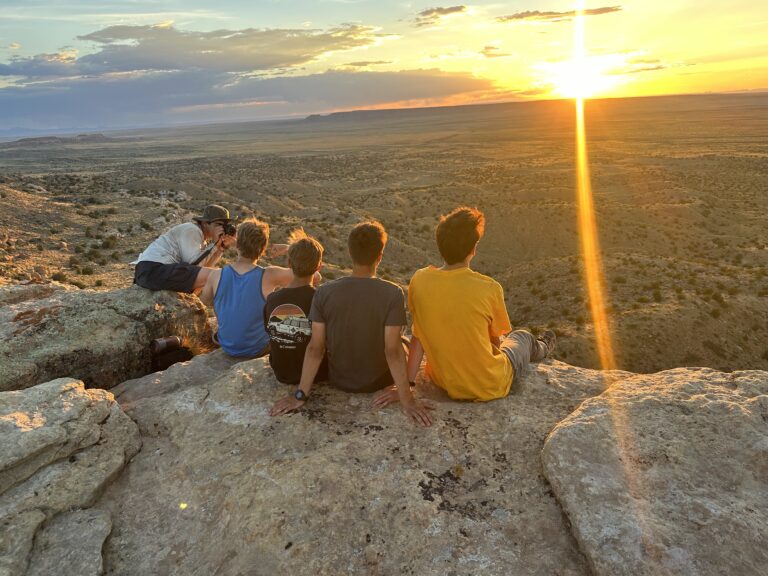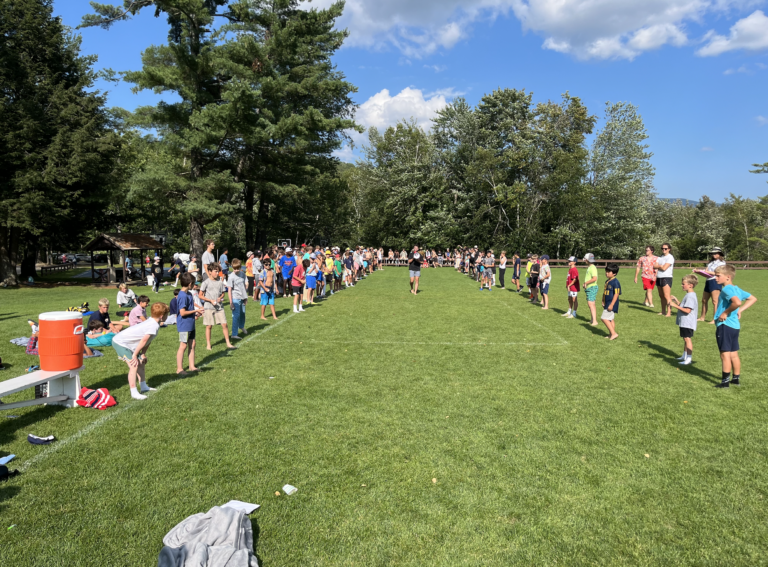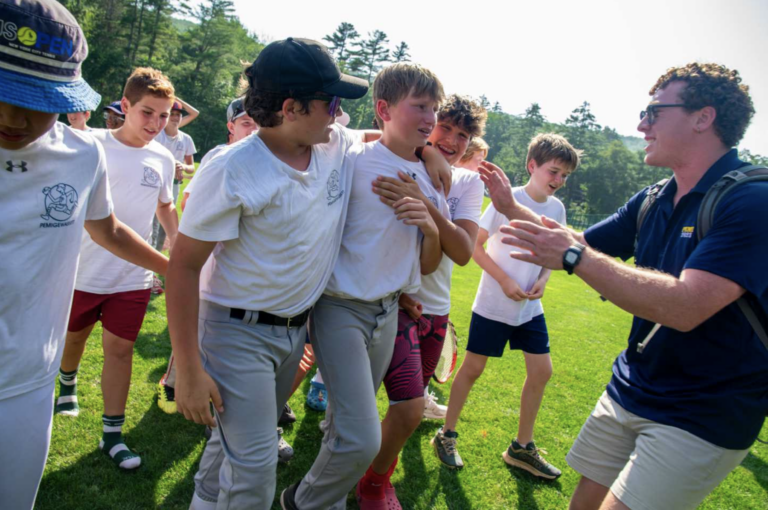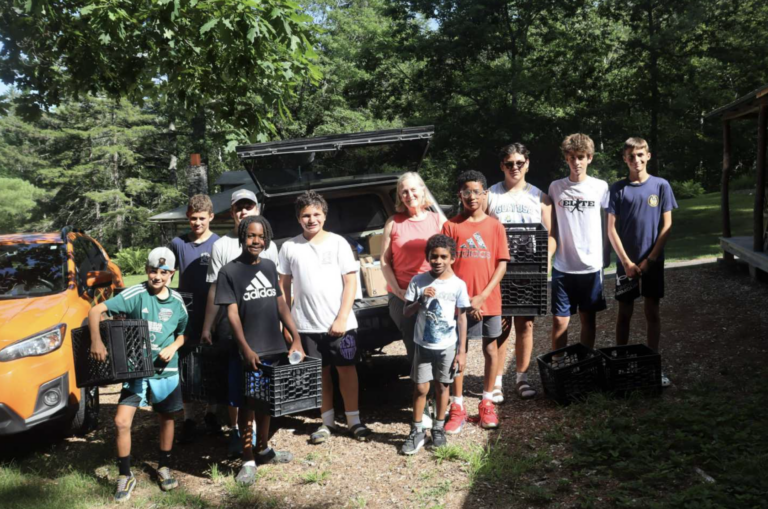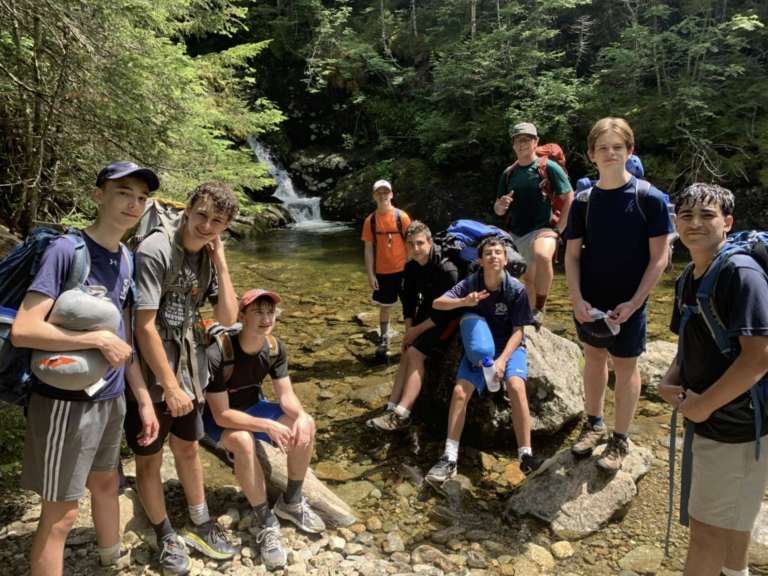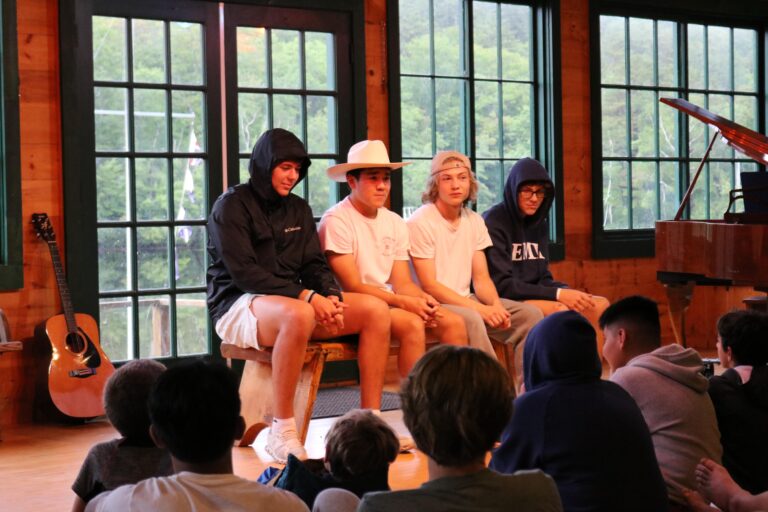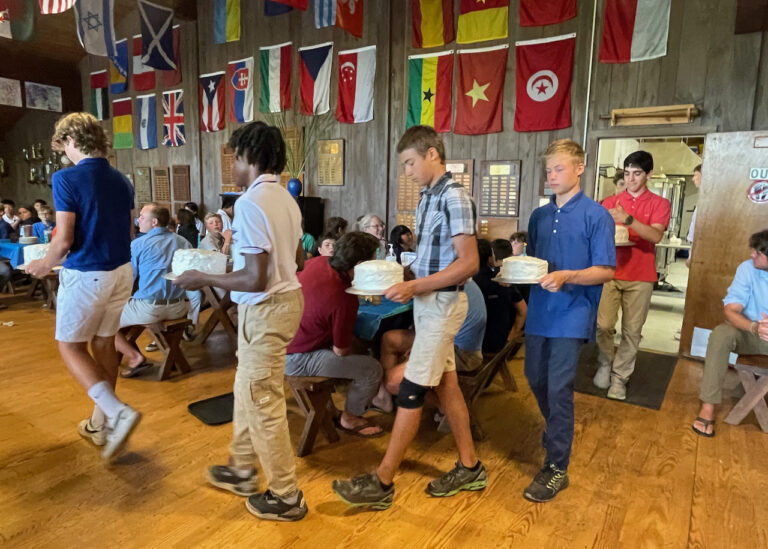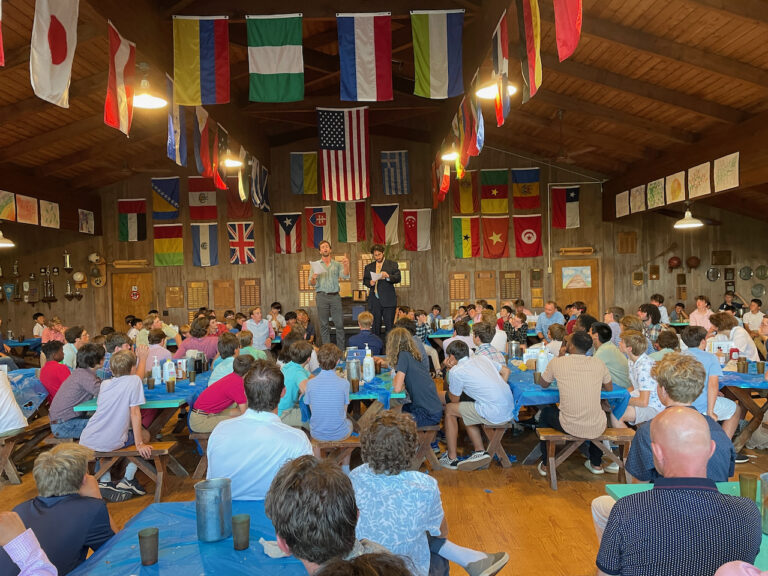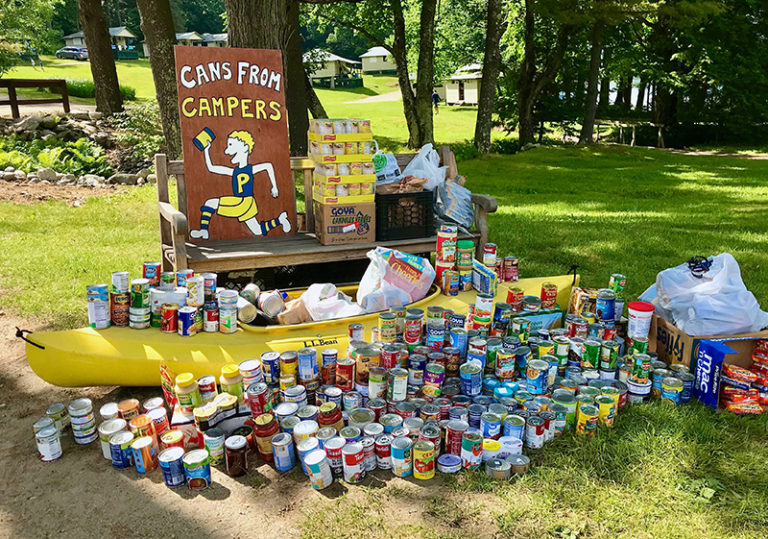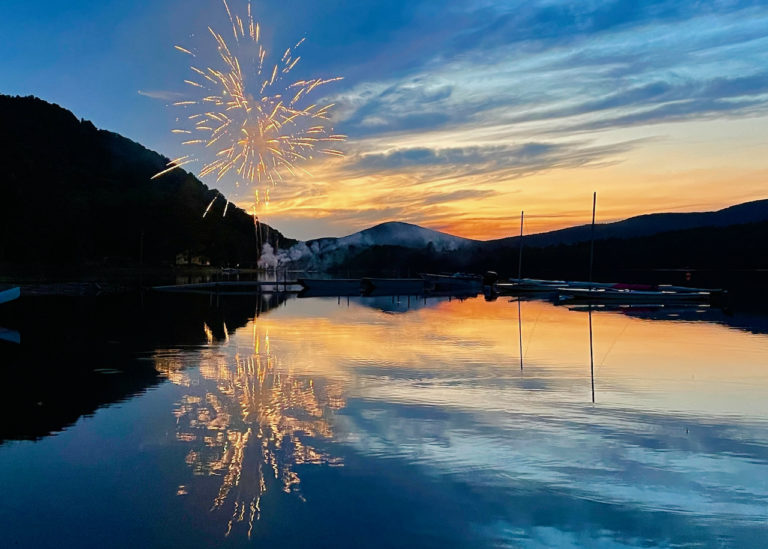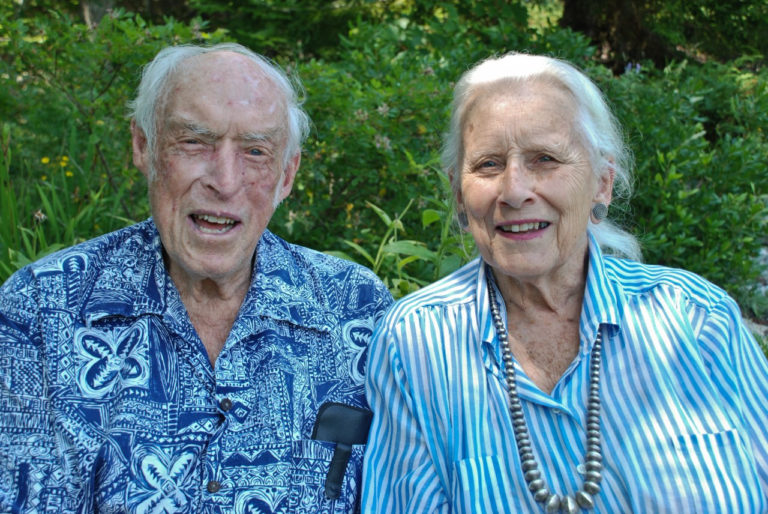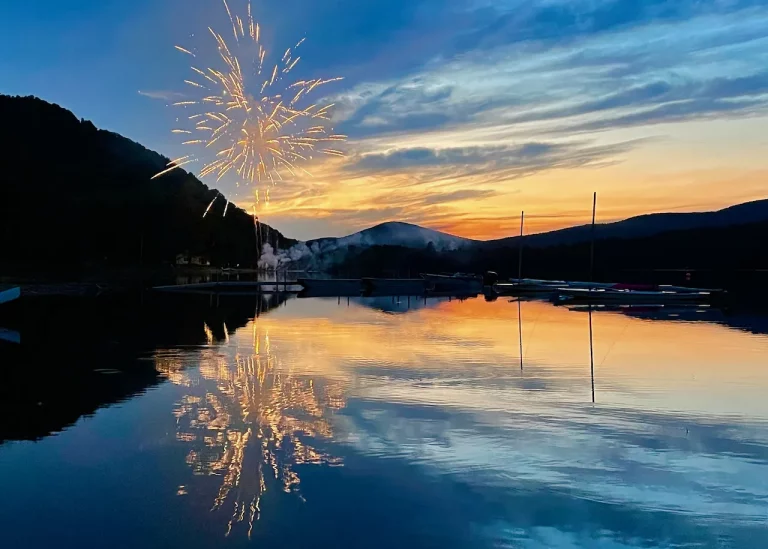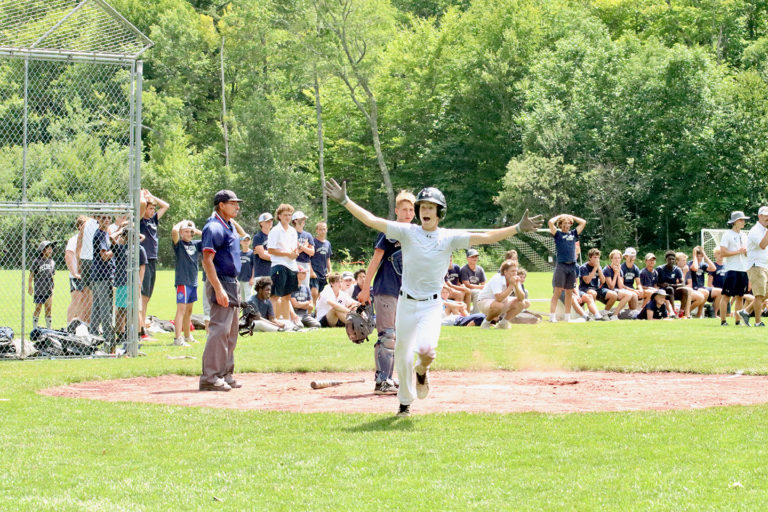- Camp Pemigewassett
- Education at Pemi
- Nature
- Newsletters 2019
#4: Dr. Larry Davis: Reflections on 50 Years at Pemi
2019 Newsletter #4
This week’s newsletter comes from Larry Davis. We’ll let him introduce himself and the occasion, but it goes without saying that reminiscences from Pemi staff about a half century of service to camp are a real rarity. We can’t think of a more appropriate topic for one of our weekly communiqués.
Fifty Years of Teaching Kids About Nature at Pemi: Reflections on Then and Now
This is my 50th summer of teaching kids about nature at Pemi. While these anniversaries are arbitrary, it does seem to be a good time to reflect on where we were back then, where we are now, and how we got here. I started in 1970. Out there “in the world,” the Apollo 13 accident happened on the way to the Moon. The Viet Nam war was raging, and many men my age (21 at the time) were headed into that quagmire. It was the year of the first Earth Day. In the USA, the voting age was lowered to 18. Gasoline cost 36¢ per gallon and a bottle of Heinz Ketchup cost 19¢.
At Pemi, Tom Reed, Sr., Al Fauver, and Doc Nick were our three Directors. The only women on the staff were Kay Richards, our office manager, and two nurses. Women were not allowed in the Mess Hall for meals; they ate in the Big House “up the hill.” Two campers brought food up to them in a big box with long handles for carrying it. Women were also not allowed at camp fire or Bean Soup. All campers were here for seven weeks and occupations were in two-week blocks. Sunday meeting was “Church” (although that was changing), and we traveled to trips and athletic events on benches bolted onto the beds in the back of open trucks. 1970 was also the first year on staff for future Director Rob Grabill. Like me, he was never “a boy” (Pemi parlance for having been a camper).
For the rest of this newsletter, I’m going to focus on changes over the last fifty years in the Nature Program at camp. We’ll look at the way things were and how they’ve evolved into the way they are now. Enjoy!
People

Clarence Dike, an English teacher and amateur naturalist from Atlantic City, NJ, ran Pemi’s nature programs for 42 years, the last being 1969. He was 79 when he retired. My run began the very next year. They were big shoes to fill, and as a 21-year-old geology graduate headed for grad school in the fall, I was out of my league (more on that later). In his later years, at least, Clarence had an assistant, a cabin counselor, helping him. I too had an “assistant” in my first year, and a good thing, too. He was Dr. William D. (“Dave”) Winter, a prominent Boston pediatrician and world-class, albeit amateur, moth expert. He had been “a boy” in the 1930s and learned directly from Clarence. Although I was nominally head of the program, he gave me the support and inside tips that I needed to be successful. He was the first of the extraordinary people that it has been my privilege to work with, and to learn from, over the years.
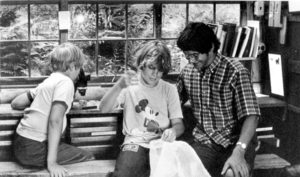
In 1971, Rob Grabill stepped into the role of nature assistant. By now I was a University Teaching Assistant working with undergraduates but still did not have a feel for how to work with 8-to-15-year-olds, especially in fields outside of geology. Rob was a natural, and not only did I learn more about butterflies and moths from him, but he also showed me the way to teach kids and get them excited about the insect world. Rob was very active in teaching nature until he became the Director, and, even then, he kept his hand in throughout his tenure by teaching the occasional lesson, leading a field trip, or taking kids out at night late in the summer to sugar for underwing moths. Rob’s magnetic personality and his status as a first-class athlete helped the program to grow in popularity, and we soon needed a third person to work with us. For several years, this was Hugh Bennett, another “bug” person (see a pattern here?). He was followed by many more, each of whom brought his (and later her, too) own set of skills and interests to us, further enriching our offerings.

By the 1980’s, things had grown enough that I needed a “number two” (fans of Star Trek will recognize this sobriquet). One of the first “number twos” was Russ Brummer, a former Pemi camper and later “Pagoda Boy,” who was studying biology and environmental science at St. Lawrence. Russ was (and is) a fantastic birder, knowledgeable about all things natural, a person with limitless curiosity, and beloved by both kids and his fellow staffers. Among his other accomplishments was, as part of his master’s work at Antioch-New England Graduate School, the creation of “Junior Environmental Explorations,” the program we still use to introduce new Juniors to nature. He also essentially ran the program during my year and a half part-time hiatus while I was working for the New Hampshire Department of Environmental Services.
When Russ stepped away to full-time middle school science teaching, he was replaced by Christine Taylor, a person with a background in Forestry, then Paula Goldberg, a PA working in a pediatric cardiology practice and a great lover of spiders.
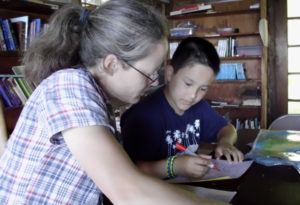
Finally Deb Kure, the current “number two” and soon (2020) to be “number one” as I step back from the role of program head and “retire” to the fun part, teaching, joined us in 2008. Deb had attended, as a just-graduated geology student at the University of Rochester, our first Nature Instructor’s Clinic (designed to teach instructors from other camps how to run their own nature program at their own camps) in 1993.
If I were to evaluate myself as a program head, I would say that my true genius was to give each of these colleagues the room to try out and refine their ideas, which were then added to the program. From each of them, I also absorbed as much as I could of their knowledge, enthusiasm, teaching techniques, and passion. The one thing we all had in common was an intense curiosity about the world around us and a willingness to answer a great question with, “Gosh, I have no idea, but let’s find out!”
The Building


The Nature Lodge itself has both stayed the same and changed profoundly. Originally built around 1929, the Paul Moore Strayer Nature Lodge is a 36×18 foot (648 square feet) space with the long side facing the lake. As the picture shows, there were only two lights, naked incandescent bulbs, one over each of the two work benches on the side of the building facing uphill. Needless to say, despite the abundant windows, the building was very dark on a cloudy day and most of it was unusable during August evenings. On one of those evenings, Bertha Fauver (Al’s wife) walked in and, ever practical, noticed this fact, and the naked bulbs were soon replaced with 6-foot florescent fixtures (still here!). The following year, we added two more of these on the lake side of the building and have since added several spot lights at each end. The amusing thing about the lights is that each is on its own switch, except the middle spot light, which has two switches, one by the uphill door and one by the lake-side door. In today’s energy-conscious world, this means we are able to use only the lighting we need at a given time, no more. That original building had two big wooden tables (visible in the picture). We still have these, although we have rotated one 90°.

The big change was the construction of the Phillip Reed Memorial Nature Library in 1995. This 24×13 foot (312 square feet) addition increased our space by 50%. (By the way, right now is the first time in my fifty years that we’ve actually made these measurements!) It houses part of our library of nearly 1,000 books (field guides are in the main building), shelves for camper collections and mineral specimens, wall space for pictures and a bulletin board, two library-style tables and chairs (some say the most comfortable in camp) and our small nature “office” (where I am writing this newsletter). Both rooms are both spacious and cluttered. They house storage space (never enough), exhibit space, teaching stations, work benches, our teaching collections, and much more.
Teaching Philosophy
This is probably the area that has changed (as opposed to grown) the most in my time here. I came to the job as a practicing scientist (geology, of course!). Starting with Russ Brummer, all the “number twos” have also been scientists as have many of the teaching staff (many geologists, many “bug” people or ecologists, some biologists, a physicist or astrophysicist or two, and some engineers). This has led us to a very different approach than the one that Clarence Dike used, which was standard for his time.
Traditionally, the emphasis of nature studies at Pemi was on identifying and naming objects in nature. Boys captured butterflies and moths, collected ferns, flowers, and other plants and pasted them into books; put rocks in a box; and, in the early days, even shot birds and small animals and skinned them for display. Awards were given for the most specimens collected in each category (flowers, ferns, butterflies, etc.). This was the first thing that I changed. I felt that our program should be science-based and conservation -minded. We still collected things, but only one of each species. More emphasis was placed on the plant’s habitat or the animal’s behavior along with their places in the overall web of life. I instituted a “rule” that we would only display things in our building that came from our area. Exotic butterflies from Papua New Guinea are exciting and beautiful, but if we display those here it implies, to my mind anyway, that somehow what we have here is not “good enough.” Nowadays, this particular location-centered approach is known as “place-based” education. We established new criteria for nature awards, and I wrote a statement encompassing these that we still use today:
Prizes for various nature activities will be awarded not necessarily for the largest number of different specimens in a particular subject area, but to the boy who has, in the opinion of the nature instructors, the best understanding of what he has collected or of the subject area that he is interested in, who has the best-ordered collection, and who, in particular, has the best ability, in the field, to recognize varieties and understand their relationship to each other.
Over the years, as each nature staffer added his or her own ideas to our approach, our teaching philosophy has evolved into one that I call informal, scientific, curiosity-driven, content-rich, place-based environmental education. It takes place mostly in the field so that we are actually seeing what we are discussing. It has proven to be a highly effective way to interest children in the world around them. We do have many practicing scientists (and even university faculty) who have gotten their start here. More importantly, however, we have turned out a huge number of future citizens who are aware of the world around them, its fragility, and our need to take care of it. On a lighter note, we’ve also turned out a huge number of people who know that being out in nature and seeing all kinds of “cool” stuff is just plain fun.
The Program
Occupations
In 1970, campers signed up for occupations in blocks that were two weeks long. There was no fourth hour so each camper had nine occupations over the course of a seven-week season (the last week was Pemi Week with no occupations). The choices were somewhat limited. In the nature realm, you just signed up for “nature” and, faced with 20 or 25 kids on the first day of the new two-week occupation block, we had to figure out what they were interested in and also how to satisfy those interests, especially given our limited staff. Later (1974 or ’75, but I’m not sure) we went to one-week blocks but we were still only listed as “nature”. In 1977, one of our staff members, John Ely, who had been a student of mine at Washington and Jefferson College, changed things forever. John was a serious student of beetles (most of the specimens in our reference collections were assembled by him). He wondered if he could offer a “beetles” occupation instead of just “nature”. This seemed like a terrific idea. So, I consulted the powers-that-be and we put it out there. It was an instant success. It was quickly clear that we ought to do this with all our areas of interest, and soon there were Rocks and Minerals, Ponds and Streams, Butterflies and Moths, Environmental Conservation, and many other nature occupations so that campers could choose what they’d like to learn about.
This illustrates just how growth in our program has taken place. Someone gets a good idea, we find a way to implement it, it works and becomes part of the overall “permanent” program. This requires a receptive program head, a dedicated instructor, and most importantly a camp administration that is willing to try something new. At Pemi we’ve always had the “try new things” attitude, and Directors and program heads have always been willing to put up the money necessary to start something new.
Over the years, mostly through this pathway, we’ve added photography, orienteering, wilderness survival, wild foods, and many, many more subject areas to our list of offerings. And we’ve expanded many popular occupations to include beginning and advanced instruction. Today, we offer five different occupations each week in each of the three morning periods. Some repeat every week. Others may come around only once or twice a summer. Overall, in a typical summer, we offer 30-35 different activities.
It’s also important to note that some of the occupations are generated by camper questions or requests. If they are interested, we’ll try to help them find out more. In fact, as I said above, we are curiosity driven, whether it be staff or camper curiosity. We are lucky to have a huge variety of habitats, geology, plants, animals, and features either on our own property or within easy striking distance, so there is lots to explore.
Trips
Beginning with my first year, we have augmented our morning instruction with afternoon field trips. When I found that we actually were in the heart of an old mining area, I couldn’t resist. We got in our truck and headed out to find some of the mineral localities that were listed in my old New Hampshire Mines and Minerals Localities book (I still use it). It was a bonanza! We quickly built a reference and teaching collection, and in the process the campers and I learned a huge amount about New Hampshire’s geology. One mine, the Palermo, turned out to be a world-famous locality. We still go every week, and we’re still finding new material.
In the old days, those trips were limited, as we had to compete with hiking trips and athletics for transportation. Now we have our own dedicated “Mobile Field Laboratory” (i.e., a nature van) and we take trips out most afternoons. Last week alone (when we had a visiting photographer teaching with us for the week), there were trips to Crawford Notch, the Palermo Mine, Franconia Notch and the Basin, north along the Connecticut River, and to a property owned by the Spiess family, who graciously allow us to visit. It is managed by Brian Van Guilder, a former Pemi staffer. It has 150-year-old sugar maples, waterfalls, beech trees with bear claw scratches, mushrooms, open woods, old stone walls, beautiful gardens, and more.
Reflection (Everything I know I learned at Camp)
Well, I have taken a long ramble through the woods and fields with you. It is time to wrap up with a bit of a reflection. A week ago Sunday, I did my annual Sunday Meeting. My title this year was “A Rock is in Back of it All, But Everything Else I Know About Nature, About Teaching, About Life, I Learned at Camp!” I started, in 1970, with a strong geology background that only got stronger as I completed my MS and PhD degrees in the field. That’s the “rock in back of it all.” But like so many others, I only knew about my narrow field and I had had little real teaching experience. My world was the world of academia, so it too was narrow. Pemi opened up worlds for me. I had a wonderful piece of the earth to explore and learn about every summer, my incredible colleagues and our campers taught me about teaching, and the community at Pemi taught me so much about life. All of these things I was able to take back to my university classroom and students, to my life outside of the classroom, and to colleagues near and far. And to think I actually got paid for that! Not bad at all.
[We offer profound thanks to Larry for this and, more importantly, for the underlying fifty years of unparalleled dedication to Pemi and everything our camp seeks to accomplish. His energy, vision, and innovative practices have been a constant inspiration to our staff and campers alike. We hope many of you can join us for a celebration of Larry’s long career in August.



